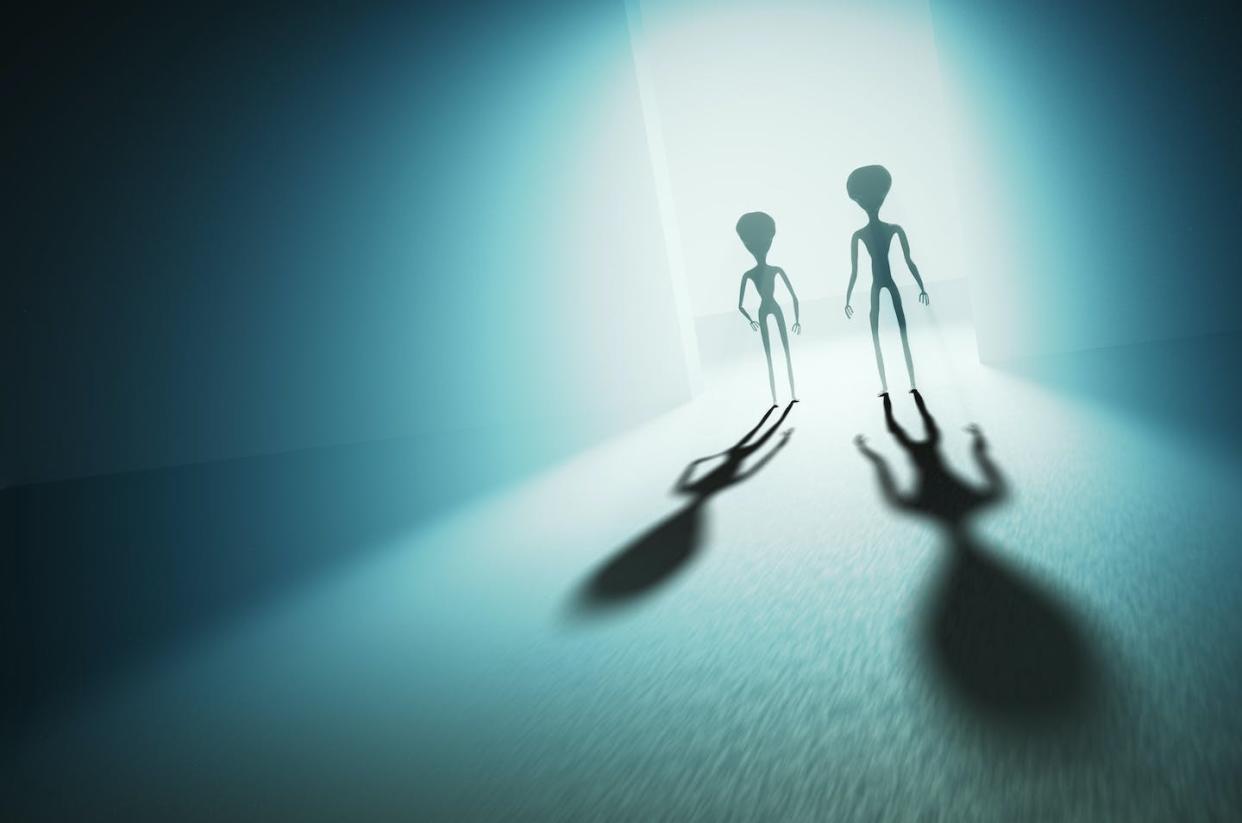How extraterrestrial tales of aliens gain traction

One night, upon returning to the cave that his tribe calls home, the monkey-humanoid Moon-Watcher finds a strange crystal object, a kind of monolith that fascinates him at first, but then quickly loses his interest when he discovers that it is not edible. Soon after, the true purpose of the monolith is revealed to be none other than penetrating the minds of our ancestors to induce new abilities that, over time, will cause the development of an intelligence capable of creating new technology.
Many readers will recognise this scene from the novel 2001, A Space Odyssey, by Arthur C. Clarke, and the film of the same name, directed by Stanley Kubrick. It almost goes without saying that the crystal monolith in question is the work of an extraterrestrial civilisation that observes life on other planets and “experiments” on them to encourage the development of intelligence in as many parts of the cosmos as possible.
Seeking simple answers to complex questions
Understanding how we, as a species, came to be intelligent is one of the great enigmas of evolutionary study. Small mutations, followed by a process of natural selection to choose the most advantageous, seems too slow a process for structures as complex as the human nervous system or brain to emerge. It is this very complexity that allows millions of neurons to communicate with each other, resulting in the emergence of qualities such as the ability to respond voluntarily to environmental stimuli, or to ask questions about the very nature of humankind and the universe.
Nowadays, we know that there are evolutionary mechanisms that have lead to great leaps in terms of complexity, but that does not stop people from turning to non-human forces – Gods, extraterrestrials, spiritual energies – to explain things that are difficult to comprehend.
This has always been the case, in all human cultures. A classic example would be attributing atmospheric events – thunder, lightning, floods – to the wrath of God. These ideas came about before humans had ever left the ground, so it is no surprise that we turned our eyes even higher – to extraterrestrials – to explain other phenomena that we could only observe once travelling at high altitudes became part of our daily lives.
The allure of the unknown
The possibility that we might have been visited by beings from other worlds has always fascinated us. The element of mystery, of the unknown, only makes it more interesting.
Any phenomenon is made all the more enticing when it seems it is being covered up or hidden for secretive reasons. The attractiveness of conspiracies often leads people towards ideas which have no scientific basis, such as the belief that the Earth is flat, that humans never set foot on the Moon, or that vaccines can control our behaviour.
Even though these ideas have repeatedly been shown to be untrue, their rapid dissemination through social media, using simple, blunt language that appeals to emotion over logic, makes them very powerful weapons.
The supposed “proof” of alien visits to our planet ranges from specific Bible passages to ancient stone carvings portraying creatures or objects that may appear to be aliens or spacecraft. The latter often take the form of flying saucers.
However, we cannot forget that humans have always created imaginary creatures that resemble them and attributed them with magical powers. When imagining Gods, humans have given them a human appearance, and almost always imagined them as living in the sky.
When we look at these representations through modern eyes, we associate them with extraterrestrial beings or structures, when in fact they could be referring to a range of different things.

When unproven stories become larger than life
Recently, in the United States Congress, UFOs (currently known as UAPs: “Unidentified Anomalous Phenomena”) are back in the limelight. This is because a former air force intelligence official has made claims that the Pentagon is in possession of remains of extraterrestrial craft and “non-human biological matter”. The claims have been backed up by the testimony of a retired navy commander and a former navy pilot.
What we can be certain of is that the more we explore our skies, the more likely it is that we will encounter phenomena that we cannot explain. However, this does not mean that they are extraterrestrial. Past experience has shown us that most of these events can be attributed to optical illusions, spy or weather balloons, space junk, or even satellites that we ourselves have made.
In Spain, UFOs were a hot topic between the 1960s and the 1980s. In this era, everyone knew someone who was convinced that they had seen a UFO. This even reached the point where an exoplanet, called Ummo, was made up. It was populated by a more advanced civilisation than ours who made contact with people on Earth. In the letters these aliens supposedly sent, the ‘Ummites’ explained concepts such as genetics and cell structure.
The truth is that nowadays, reading some of these letters can be quite amusing. The story of the planet of Ummo was ultimately proved to be a monumental hoax, a fact later admitted by its own creator.
The Ummo hoax was even linked to the creation of a paedophile ring, which should make us reflect on the harmful consequences that the spread of fabricated news stories can have.
Can we deny the possibility that intelligent alien civilisations exist?
The answer, of course, is no. The universe is immense, and it is more than likely that circumstances similar to those which led to the appearance of life on Earth have been repeated on other planets. But there is a huge distance (literally and figuratively) between acknowledging the existence of these creatures and considering the possibility that they might have visited us.
Exoplanets, also known as extrasolar planets, are extremely far away, and we are limited by the speed of light which, as proven by Einstein, is the maximum possible speed at which anything can travel. Therefore, the journey to even a “nearby” exoplanet would take thousands of years. Maybe a civilisation more advanced than ours could find a way to do it faster, but not to the point of it being something easy or commonplace.
In any case, if the remains of alien life or spacecraft are stored away somewhere, why are they not being shown to us? Scientists would jump at the chance to analyse this organic matter to find out how it is structured, how it metabolises energy, or what molecules it uses to store genetic information.
Until there is proof, this is not a question of science, but rather, of stories. Stories can be very entertaining, but these kinds of stories do not help us to build a more accurate or helpful view of the world.

